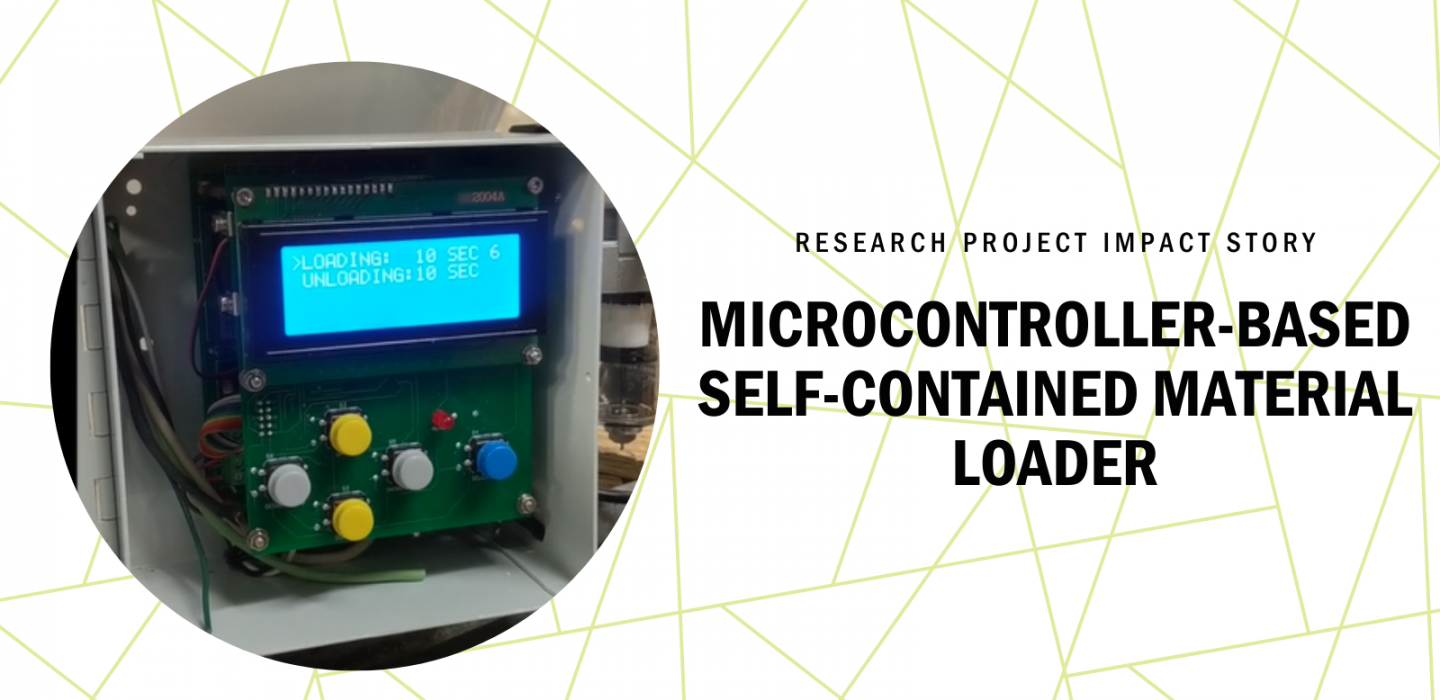Project Title: Microcontroller-based self-contained material loader
Principal Investigator: Savdulla Kazazi
Industry Partner: Hamilton Plastics Systems Ltd.
Research Assistants: Anand Muthusamy and Ba Vu Tran
Hamilton Plastics Systems Ltd. (HPSL) currently uses a control board for the operation of their Integral Vacuum Loaders, which have discreet digital components designed fifty years ago. The discreet digital components include timer Integrated Circuits (ICs), counter ICs, and other logic gates supporting ICs. The life span of these components has decreased over time; at present, it is less than six months.
Lead by Principal Investigator Savdulla Kazazi, the team proposed a solution to design a new version of the control board, which would be programmable, easy to work with, reliable in the industrial setting, and cost-effective.
Within a six-month period, the team created four versions of the control board prototypes, and two of them were delivered to HPSL for testing purposes.
The final prototype includes a controller board and a relay board.
The controller board contains a microcontroller that can be reprogrammed based on the specific requirements that may vary over time, a Liquid Crystal Display (LCD), a memory chip, and a microchip responsible for Universal Serial Bus (USB) communication.
The relay board includes low voltage driving circuits, voltage comparison circuits for alarm function, and a modular power supply unit.
The reprogramming capability of the proposed solution is an innovative improvement, compared to the previous one as there is no need to modify the hardware for reprogramming. Additionally, the wiring labour will be significantly reduced because all connections to field devices are available through connectors on the relay board.
Once the testing of the control boards in an industry environment is completed, the control boards can be mass-produced and installed in the new version of HPSL’s integral loader.
The research assistants who worked on the team, Anand Muthusamy and Ba Vu Tran, were given the opportunity to broaden their knowledge and improve their hands-on skills by applying technology to solve real-life problems in an industrial application.
“Students were trained to be independent workers and critical thinkers through all phases of the project,” says Kazazi.
“By communicating with team members to address technical concerns on a day-to-day basis throughout the length of the project, students also developed interpersonal skills, which is a necessity to become market-ready after graduation.”
